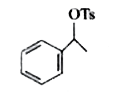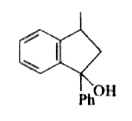The common asexual spore in algae is , Br i-Thin-walled, br ii- Always biflagellated, iii-Non-motile endogenous, iv. Motile and perennating , V. Endogenous, motile & dispersing also , vi. Exemplified by green, brown & red algae.
i,ii, iv , vi
I , v
I , ii, v
iii ,vi
Step by step video & image solution for The common asexual spore in algae is , Br i-Thin-walled, br ii- Always biflagellated, iii-Non-motile endogenous, iv. Motile and perennating , V. Endogenous, motile & dispersing also , vi. Exemplified by green, brown & red algae. by Biology experts to help you in doubts & scoring excellent marks in Class 12 exams.
Updated on:21/07/2023Similar Questions
In C4 plants, bundle sheath cells are characterised by how many features given below? Br i. Large cells, br ii- Having large number of agranal chloroplasts, br iii- Thin walled
View SolutionWhich of these plants is correctly matched with its reproductive characteristics ?
(i) Sphagnum : Male sex organ called antheridium produce biflagellate antherozoids while the female sex organ called archesporium produces a single egg .
(ii) sequoia : One of the megaspores enclosed within the megasporangium develops into a multicellular female gametophyte that bears two or more archegonia or female sex organs
(iii) Wolffia : one of the male gametes fuses with the egg cell to from a zygote while the other male gamete fuses with the diploid secondary nucleus to produce the triploid primary endosperm nuclelus .
(iv) polysiphonia . Sexual reproduction is oogamous with non-motile gametes and accompanied by complex post-fertilization developments
View Solution
Knowledge Check
Read the given statements about lichens and select the incorrect ones.
(i) They represent an example of commensallism.
(ii) Algal partner obtains water and mineral salts from the fungus and the fungal partner obtains food prepared by the aiga.
(iii) These do not grow in polluted areas.
(iv) The mycobiont is usually an Ascomycetes or a Basididiomycetes.
(v) The phycobiont is mostly a green alga or a cyanobacterium.
(vi) These constitute the pioneer community in case of hydrosere.Ai and iiBv and viCi and viDi,v and viAn organic compound (A)C8H10O was subjected to a series of test in laboratory.
It was found that this compound :
(i) Rotates the plane polarized light.
(ii) Evolves H2 gas with Na.
(iii) Reaches with I2 and NaOH to produce yellow ppt.
(iv) Does not react with Br2/CCl4
(v) Reacts with hot KMnO4 to form (B)C7H6O2, which can also be synthesized by benzene and carbonyl chloride followed by hydrolysis.
(vi) Loses optical acitvity as a result of reduction with Red P+Hi to form C.
(vii) Reacts with Lucas reagent in about 5 minutes.
ATsCl−−→Xalc.KOH−−−−−→YConc.H2SO4−−−−−−−→Z
Find out correct structure of Z.A B
B C
C D
D
An organic compound (A)C8H10O was subjected to a series of test in laboratory.
It was found that this compound :
(i) Rotates the plane polarized light.
(ii) Evolves H2 gas with Na.
(iii) Reaches with I2 and NaOH to produce yellow ppt.
(iv) Does not react with Br2/CCl4
(v) Reacts with hot KMnO4 to form (B)C7H6O2, which can also be synthesized by benzene and carbonyl chloride followed by hydrolysis.
(vi) Loses optical acitvity as a result of reduction with Red P+Hi to form C.
(vii) Reacts with Lucas reagent in about 5 minutes.
Compounds B and C are respectively:A B
B C
C D
D
Consider the following statement and select correct set for brown algae as well as red algae.
(i) Certain marine forms produce large amonts of hydrocolloids.
(ii) Used as food supplements by space travellers.
(iii) Organisms may have unicellular and multicellular plant body.
(iv) They have cellulose in cell wall and chlorophyll a pigment.
View SolutionRead the following statements and select the option which CORRECTLY identifies the INCORRECT ones.
(i) Potato spindle tuber disease is caused by viroids .
(ii) Viruses cause diseases like common cold, herpes and AIDS.
(iii) Mycoplasma is prokaryotic organisms that completely lack a cell wall.
(iv) In Ascomycetes, the asexual spores are conidia produced endogenously on the special mycelium called conidiophores
View SolutionWhich of the following are the characteristics of phaeophyceae ?
(i) possess chlorophyll a,c carotenoids and xanthophylls.
(ii) Food stored is in the from of laminarin and mannitol.
(iii) Asexual reproduction by biflagellate zoospores that have two equal apically attached flagella.
(iv) Cell wall has cellulose and algin.
(v) sexual reproduction is oogamous only.
(vi) Gametes have two laterally attached flagella.
View SolutionWhich of the following statement is / are incorrect ?
(i) Green light falling in the range of wavelength 500 -580 nm is least effective for photosynthesis.
(ii) In non - cyclic photophosphorylation, the electron expelled from the reaction centre is not cycled back , though its loos is compensated by electrons from the photolysis of water .
(iii) Chl a , Chl b , carotenoids , and xanthophylls are insoluble in organic solvents.
(iv) 400-700 nm light is used in photosynthesis also known as PAR.
(v) Red light is the most effective for photosynthesis.
View SolutionAn organic compound (A)C8H10O was subjected to a series of test in laboratory.
It was found that this compound :
(i) Rotates the plane polarized light.
(ii) Evolves H2 gas with Na.
(iii) Reaches with I2 and NaOH to produce yellow ppt.
(iv) Does not react with Br2/CCl4
(v) Reacts with hot KMnO4 to form (B)C7H6O2, which can also be synthesized by benzene and carbonyl chloride followed by hydrolysis.
(vi) Loses optical acitvity as a result of reduction with Red P+Hi to form C.
(vii) Reacts with Lucas reagent in about 5 minutes.
Find out structure of compound A:
View Solution
